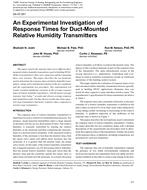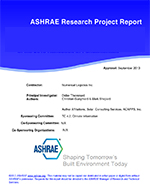It was observed that the flow rate of refrigerant through orifices, used as throttling devices in heat pumps, was primarily dependent on the upstream refrigerant condition and not on the downstream pressure. The characteristics of the flow through orifices were thus similar to the characteristics of flow through capillary tubes. Furthermore, the observed mass flow rates were greater than those calculated, assuming that the flow is sonic at a plane of the orifice. A theory has been developed based on the assumption that when the upstream refrigerant is subcooled, the exit plane of the orifice is saturated liquid, and when the upstream refrigerant is two-phased, the exit plane is sonic. This assumption is theoretically justifiable and enables the solution of all the governing equations – conservation of energy, conservation of momentum, continuity, and the equation of state. The use of an overall pressure drop coefficient in the equation for the conservation of momentum enables the correlation of experimental data with theory. The theory for the flow through orifices is consistent with the theory for the flow through capillary tubes.
Units: Dual
Citation: ASHRAE Transactions, 1988, vol. 94, pt. 1, Dallas, TX
Product Details
- Published:
- 1988
- Number of Pages:
- 23
- File Size:
- 1 file , 1.6 MB
- Product Code(s):
- D-DA-88-3145


